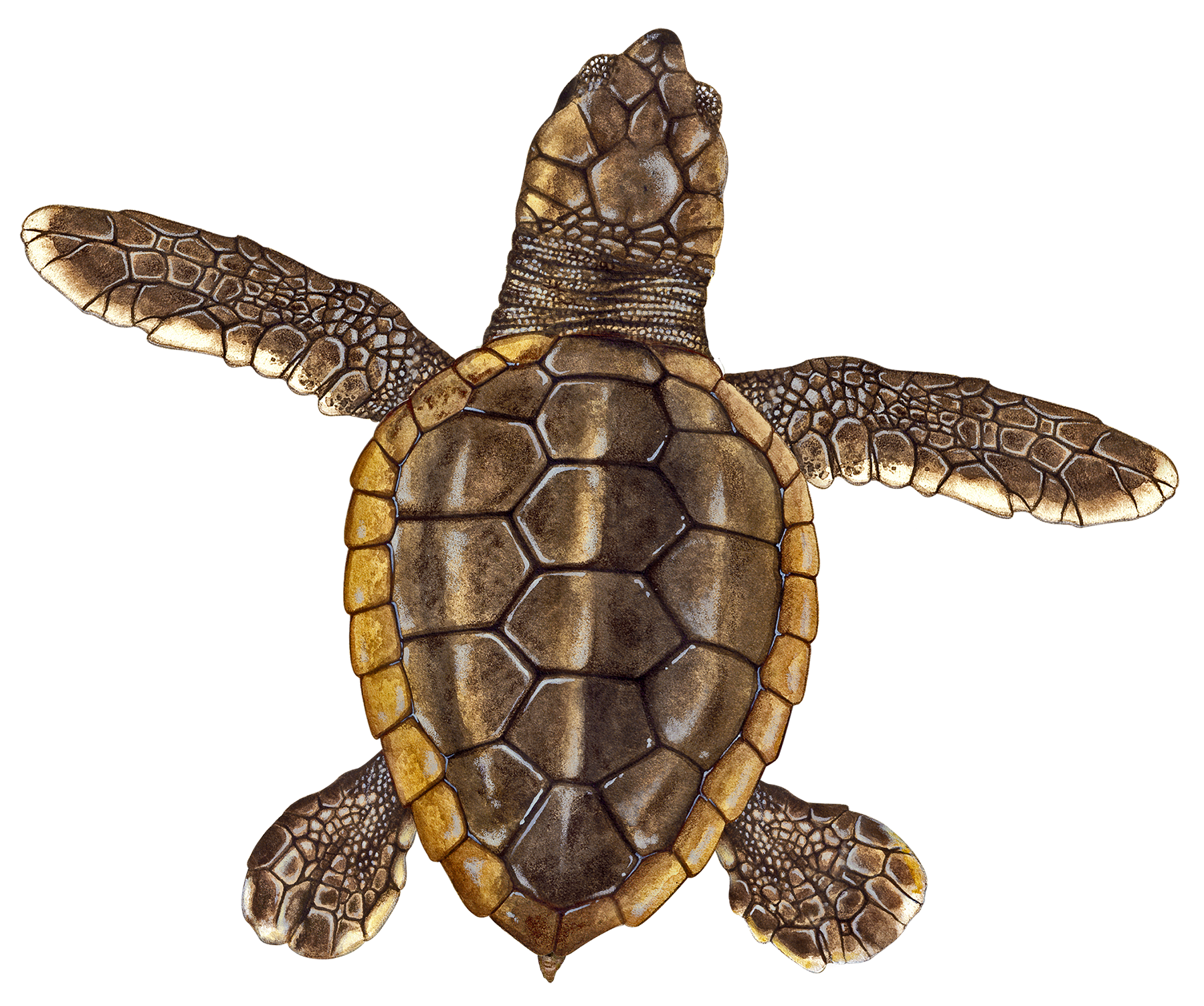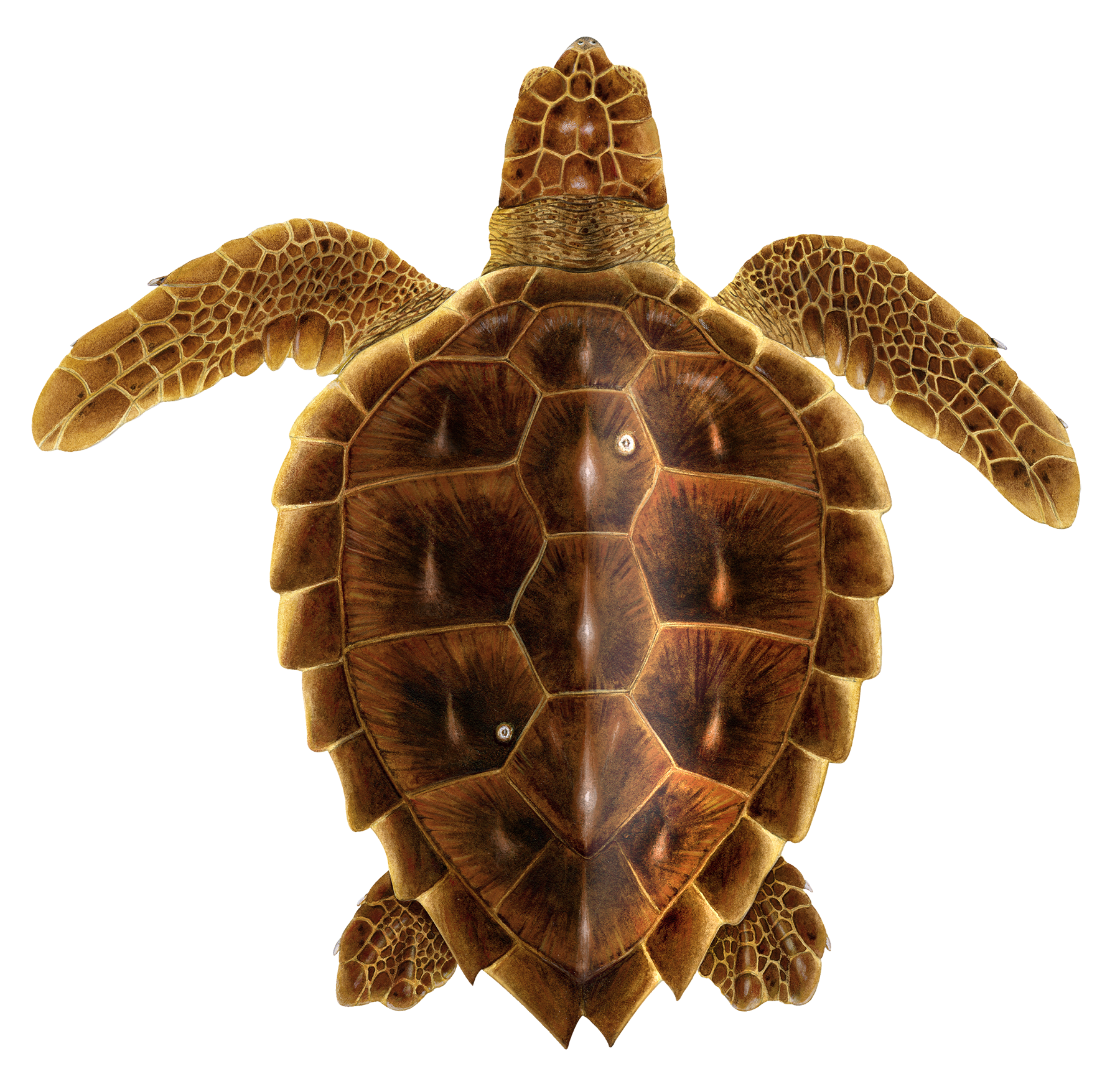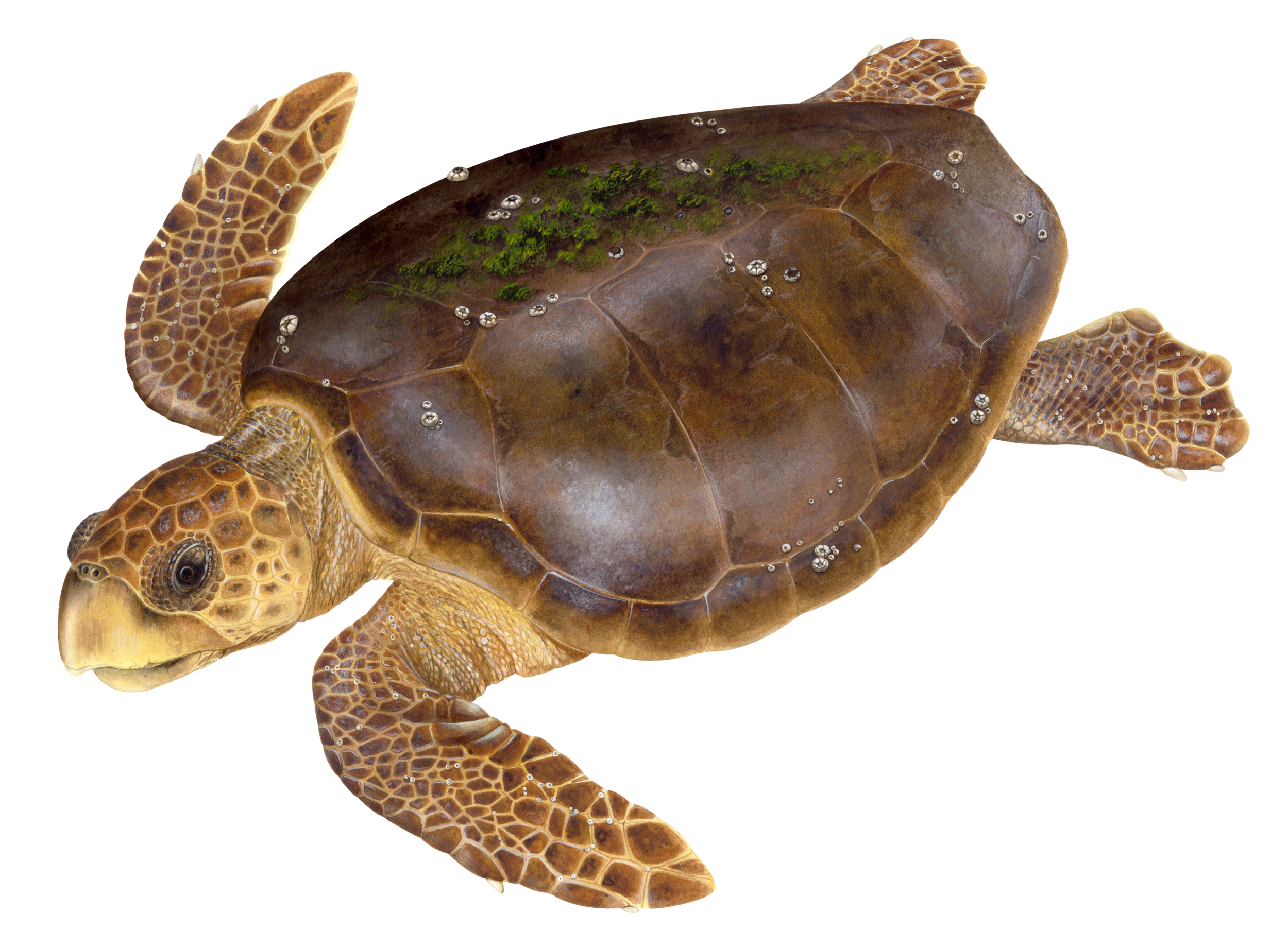Loggerhead Sea Turtle (Caretta caretta)
Loggerheads are the most widely distributed hard-shelled turtle. They are known to make extensive migrations; Ember the rescued juvenile loggerhead swam from Florida to the middle of the Atlantic Ocean. With disproportionately larger heads than other sea turtles, loggerheads use their powerful jaws to crack open the hard shells of molluscs and crustaceans.
Scientific Classification
Kingdom: Animalia
Phylum: Chordata
Class: Reptilia
Order: Testudines
Family: Cheloniidae
Life Cycle
Natural Lifespan: 50 years
Age at Sexual Maturity: 20 years
Average Clutch Size: 100 - 125 eggs
Average Clutches per Season: 2 - 6 clutches
Nest Incubation Period: 60 days
Remigration Interval: 2 - 4 years
Species Description
Adult Weight: 113 - 181 kgs (250 - 400 lbs)
Adult Size: 1 - 1.1 m (3 - 3.5 ft)
Appearance: Broad head with yellow cheeks, red-brown, heart-shaped carapace
Diet: Mostly hard-shelled invertebrates, including crabs, mollusks and shrimp, but also jellyfish
Habitat
A rare loggerhead sea turtle sighting in the Gulf of California by Sea Turtle Spotter ambassadors Tamara and Alex Double.
Geographic Range: Mostly found in tropical and subtropical waters around the world, venturing into temperate waters to forage.
Marine Habitat Use: Pelagic (especially juveniles) and rocky coastal bays, estuaries and lagoons. Loggerheads spend most of their time within the top 5 m (16.4 ft) of the water column, where they have been observed feeding on jellyfish. Loggerheads also dive below the thermocline for up to 30 minutes at a time to feed on shellfish before returning to warmer surface waters to thermoregulate.
Conservation
Due to their extensive range, loggerheads have benefited from protections, resulting in a decrease in the direct consumption of adult loggerheads and eggs. These include the SPAW (Specially Protected Areas and Wildlife) Protocol to the Cartagena Convention (a protocol concerning specially protected areas and wildlife), CITES Agreement (Convention on International Trade in Endangered Species of Wild Fauna and Flora), and the Convention on Migratory Species (CMS).
Fisheries bycatch and ship strikes are primary threats to loggerheads in marine environments. The use of Turtle Excluder Devices on bottom trawlers is improving the odds for loggerheads in the East Pacific and North Atlantic Oceans. Additional monitoring at sea, and targeted partnerships with fishing stakeholders in geographic areas where loggerheads face the highest risks, could further improve conservation outcomes for this species.
-
Upwell has tracked juvenile loggerheads with various collaborators as part of our Lost Years Initiative. Upwell partners with the COSTA Project, the Okeanos Center of the University of the Azores, Aquário de Porto Pim, Mercator Ocean International and Florida Atlantic University to find out what habitat loggerheads utilize in the waters of the Azores and beyond. When The Georgia Sea Turtle Center rescued and rehabilitated Ember the loggerhead hatchling, Upwell provided a micro-satellite tag when Ember was ready for release and followed the journey across the Atlantic.
Upwell’s wildlife veterinarian Dr. Heather Harris is conducting ongoing research into cold-stunned sea turtles on the US West coast, including loggerheads.
Fun Fact
A 940 ml (31.8 oz) beer is often referred to as a caguama (loggerhead) in Mexico.



